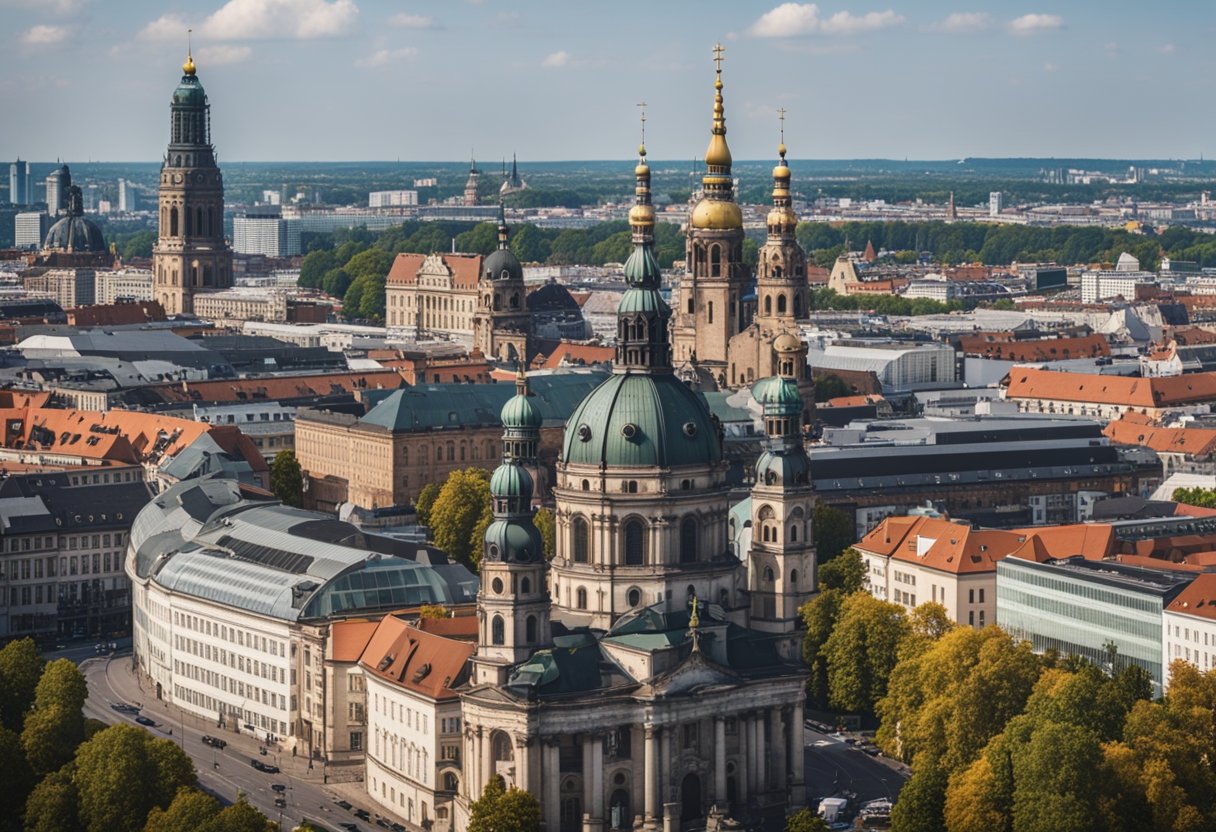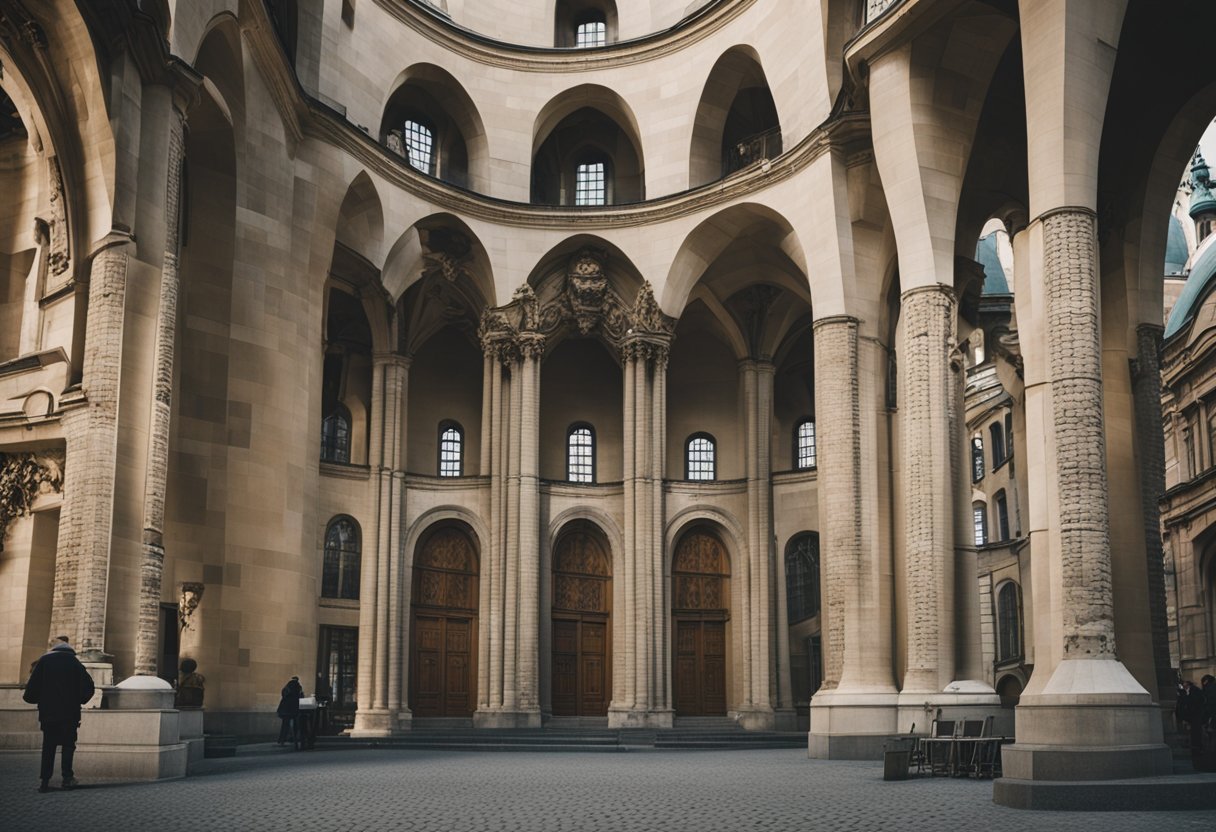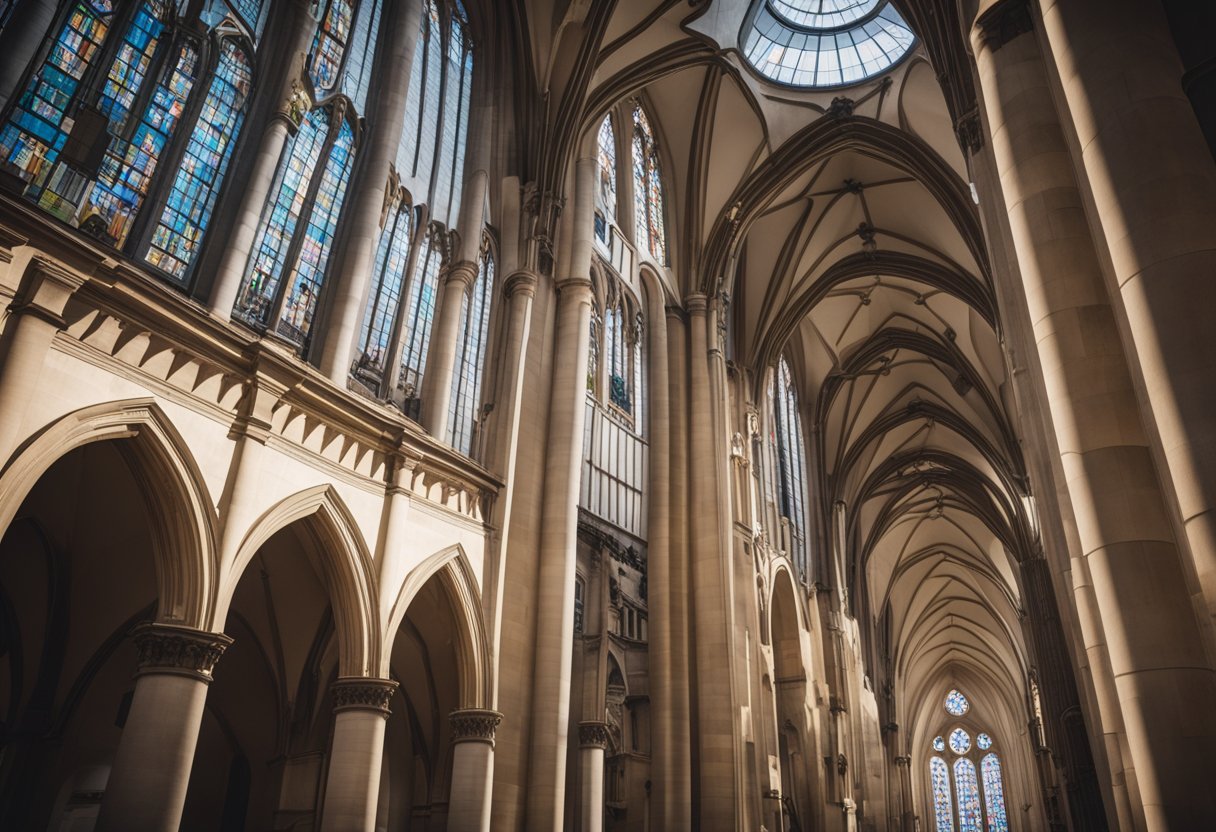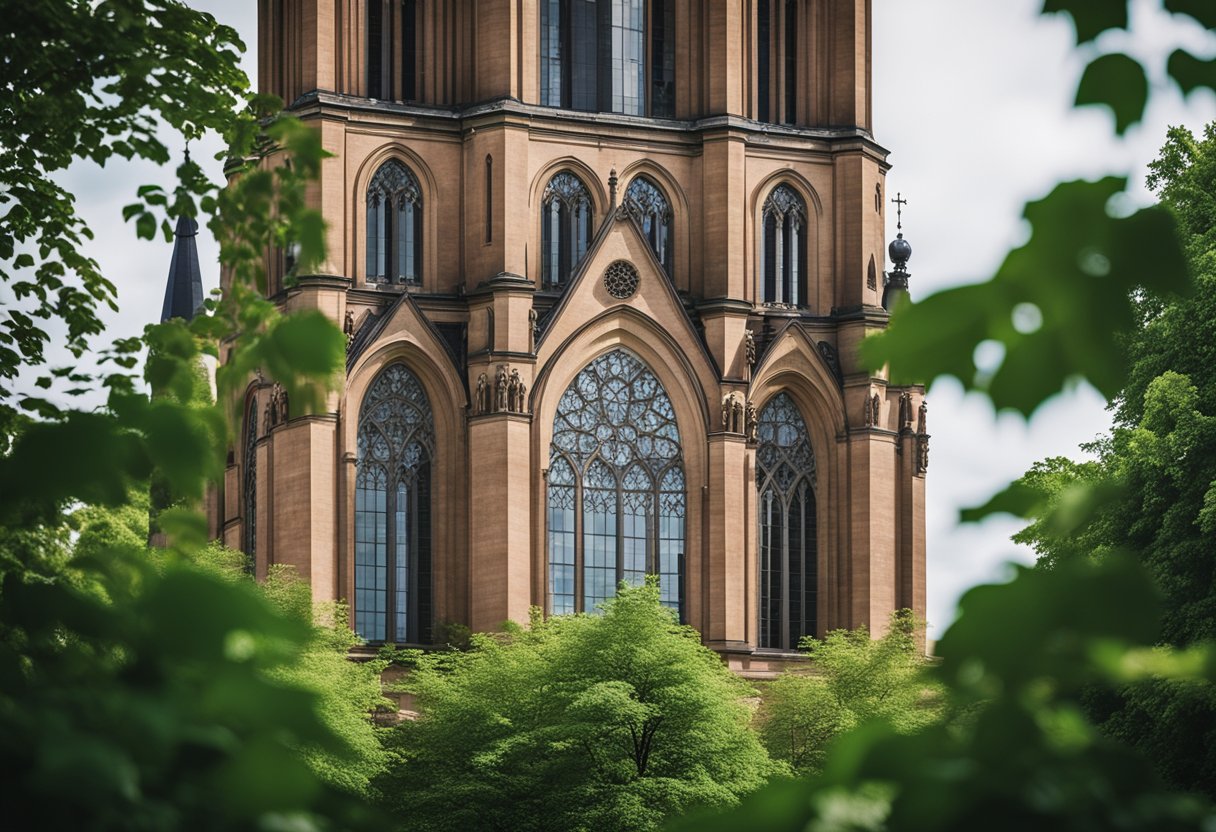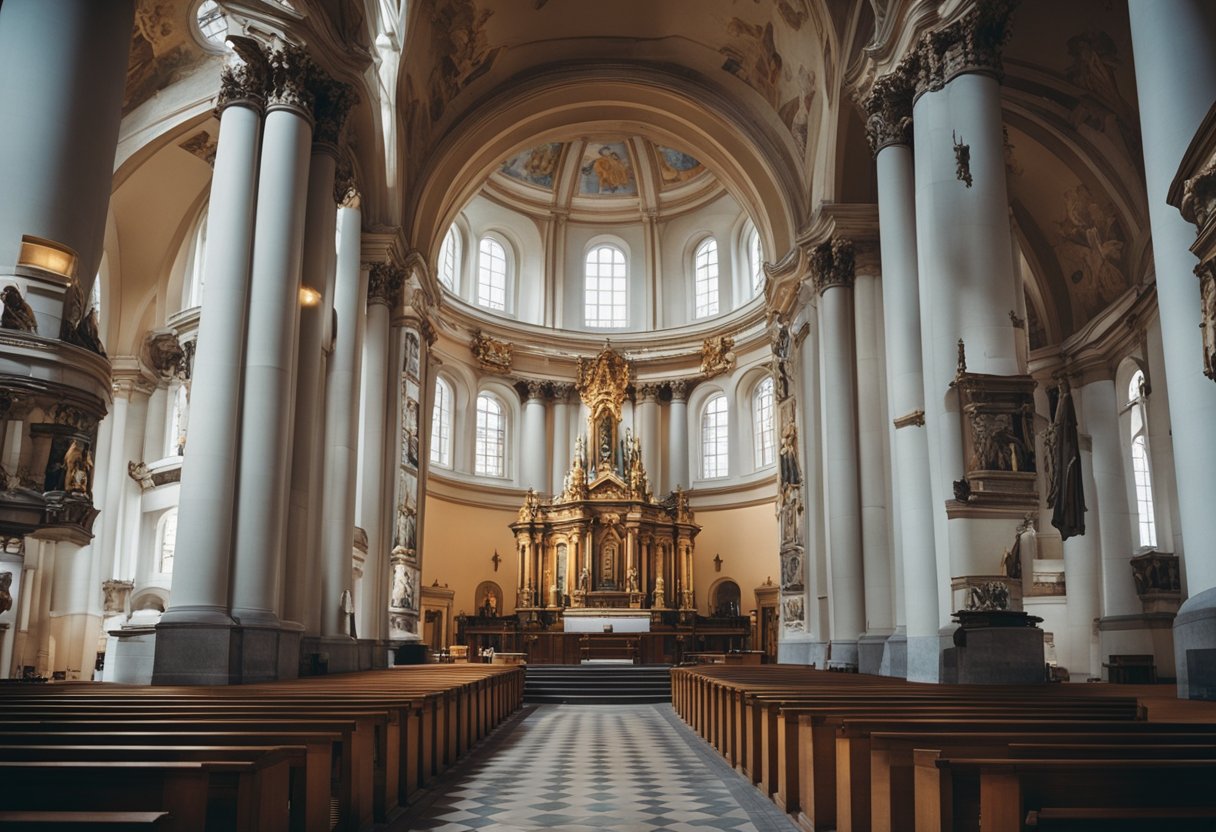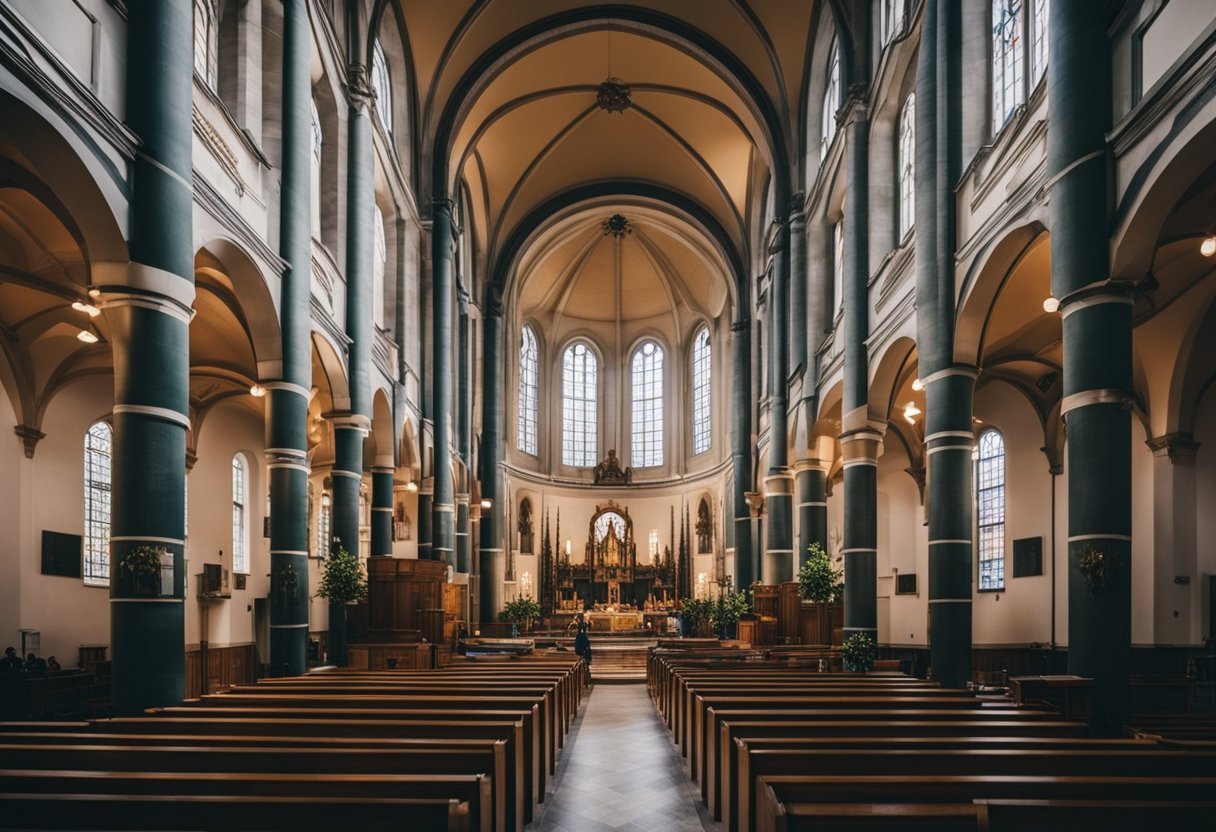Berlin, Germany’s capital, is a city steeped in history, and its religious architecture offers a window into its complex past. Among the most striking features of the cityscape are its churches, which range from historical ruins to modern constructions.
Berlin churches not only serve as places of worship but also as monuments commemorating eras of prosperity, conflict, and reconciliation.
The Berlin Churches, with its grand dome and ornate interior, stands out as an architectural gem and a symbol of Protestant significance in the heart of Berlin. Another notable site is the Kaiser Wilhelm Memorial Church, partially destroyed during World War II and preserved as a poignant reminder of the devastating impact of war.
Additionally, the Nikolaikirche, Berlin’s oldest church, traces its roots back to the 13th century and now functions as a museum, reflecting the city’s rich historical layers.
These sacred sites are not just centers for religious activity; they often double as concert venues and public spaces, inviting everyone to experience their beauty and historical significance.
In summary, Berlin churches are not only places of worship but also guardians of history and culture, embodying the resilience and transformation of a city that has witnessed profound changes over the centuries.
Historical Background of Berlin Churches
Berlin, Germany, has been a place where the narrative of Western civilization has unfolded, evident in the many churches that bare its rich history, from the impact of the Reformation to the scars of World War II and the efforts of post-war reconstruction.
Reformation and Its Impact on Berlin Churches
Berlin, at the heart of Brandenburg, witnessed the profound changes of the Reformation in the 16th century. The movement, initiated by figures like Martin Luther, drastically altered the religious landscape of Germany, including Berlin.
It led to the conversion of many Roman Catholic churches to Protestantism. The shift in religious thought and national policies during this period was seminal in shaping the religious identity of Berlin.
Berlin Churches During World War II
During World War II, Berlin experienced extensive destruction as the city became a focal point in the catastrophic conflict.
Many churches in Berlin were heavily damaged or destroyed as a result of aerial bombardment, including the symbolic Kaiser Wilhelm Memorial Church. The Nazi regime’s aggressive warring unequivocally impacted the architectural and community fabric of Berlin’s churches.
Post-War Reconstruction and the Berlin Churches
After the war, Berlin faced the enormous task of rebuilding its structures, including its historic churches.
The post-war period saw a resurrection in a twofold sense: physically, as buildings like the Kaiser Wilhelm Memorial Church were restored or preserved as a poignant remembrance of peace and tragedy; and spiritually, as they continued to serve as places of worship and reflection for a city divided by the Cold War.
The reconstruction of Berlin’s churches stood as a symbol of the city’s resilience and resolve to restore its cultural and religious heritage.
Significant Protestant Berlin Churches
Berlin, with its rich historical tapestry and cultural diversity, is home to some of the most significant Protestant churches, each bearing its unique history and architectural splendor.
Kaiser Wilhelm Memorial Church
Often referred to as the Gedächtniskirche, the Kaiser Wilhelm Memorial Church stands as a poignant symbol of Berlin’s turbulent past.
Despite severe damage from air raids during World War 2, its surviving spire, alongside a modern bell tower, makes it a compelling site for reflection. Visitors are often struck by its distinctive appearance and the moving tribute it pays to the lives lost during the war.
Berlin Cathedral
Berlin Cathedral, known as the Evangelical Supreme Parish and Collegiate Church, commands attention in the city’s skyline with its grand dome.
This church is not only a place of worship but also serves as a dynastic tomb for the House of Hohenzollern. The cathedral’s impressive organ is a centerpiece, resonating with music that fills the ornate interior.
St. Mary’s Church
Located in central Berlin, St. Mary’s Church is one of the city’s oldest churches. Its origins can be traced back to the medieval period, and today, it continues to play an important role in the Protestant community. Its historical significance is matched by its artistic contributions, including medieval frescoes and a modern reconciliation bell.
American Berlin Churches
The American Church in Berlin represents the diverse international community within the city. As an English-speaking congregation, it offers a spiritual home away from home for American expatriates and other English speakers.
Functioning under the umbrella of the Evangelical Church in Berlin, it extends its welcome to people of all backgrounds seeking fellowship in Berlin.
Noteworthy Roman Catholic Churches
Berlin, known for its diverse religious heritage, is home to several significant Roman Catholic sacred sites that reflect its rich historical tapestry and serve its community.
St. Hedwig’s Cathedral
St. Hedwig’s Cathedral stands as a beacon of the Roman Catholic faith in Berlin. Dedicated to Saint Hedwig of Silesia, it is not only a place for worship but also a monument of historical importance. Built in baroque style, its architecture and spiritual significance make it the principal church of the Roman Catholic Archdiocese of Berlin.
St. Nicholas Church
The St. Nicholas Church is another noteworthy Roman Catholic site. Although smaller in scale compared to St. Hedwig’s, it is rich in community life and cultural significance. Lying in the heart of Berlin, it has served the faithful for centuries, facilitating a deeper relationship with God and Jesus Christ among its community.
Maria Regina Martyrum
The Kirche Maria Regina Martyrum stands as a solemn reminder and commemoration of the martyrs who laid down their lives in the name of faith during turbulent times in history.
This church is dedicated to the Blessed Virgin Mary and is a place of pilgrimage for many, serving as a special place for reflection on the sacrifices made for religious freedom and Roman Catholic beliefs.
Architectural Styles and Artistic Elements
Berlin’s churches present a visual narrative of the city’s history and cultural influences through their distinctive architectural styles, from Neoclassical to Gothic and Modern designs, each enriched with artistic elements like mosaics and stained glass.
Neoclassical and Baroque Influences
Neoclassical architecture in Berlin’s churches is characterized by its grandiose sense of order, symmetry, and proportion. St. Nicholas Church, the city’s oldest, embodies this with its classical columns and pediments, reminiscent of the Pantheon in Rome. Within this sphere, Baroque elements blend notably, displaying lavish decorations and curved lines.
Gothic Churches and Their Characteristics
The Gothic influence is prevalent in Berlin’s churches, where pointed arches, ribbed vaults, and flying buttresses are matched with ornately detailed mosaics. Spires and stained glass windows create imposing and awe-inspiring facades and interiors, capturing both religious significance and artistic ambition.
Modern Church Designs
Modernist and Neo-Romanesque styles represent a turning point in church architecture within Berlin. Architects like Karl Friedrich Schinkel championed Neo-Romanesque designs with rounded arches and robust stonework. These churches often serve as landmarks, hosting art exhibitions and concerts, showcasing a blend of sacred space and cultural venue.
Berlin Churches as Cultural and Community Hubs
In Berlin, churches are not only places of worship but also serve as pivotal centers for cultural events and community engagement, contributing to the city’s diverse social landscape.
Church Concerts and Events
The Berliner Dom, one of the most iconic structures in the city, is renowned not just for its religious significance but also for its cultural offerings.
Frequent church concerts harness the cathedral’s acoustics, transforming the sacred space into a hub of musical excellence. These events span from classical music to modern choral performances, attracting both locals and tourists beyond the regular church services.
Social Services and Community Involvement
Moreover, Berlin’s churches often lead in fostering community relations and providing social services. Several churches open their doors to host initiatives focused on reconciliation and societal support.
This includes food banks, youth programs, and counseling services which play a substantial role in community involvement, showing the churches’ dedication not only to spiritual guidance but also to societal welfare.
Churches as Tourist Destinations
Berlin, known for its rich history and cultural landscape, offers a variety of churches that are not only places of worship but also significant tourist destinations, steeped in architectural beauty and historical relevance.
Gendarmenmarkt Churches
The Gendarmenmarkt, a significant square in Berlin, is home to two architecturally stunning churches: the French Cathedral (Französischer Dom) and the New Church (Deutscher Dom).
The French Cathedral, with its distinctive dome, provides visitors with an immersive historical experience, complete with an exhibition about the Huguenots in Brandenburg. Guided tours are available, giving tourists an in-depth understanding of the area’s history.
Museum Island Churches
Museum Island is not just a haven for art lovers but also hosts the awe-inspiring Berliner Dom (Berlin Cathedral), which is known for its majestic dome.
Open to the public, the Berliner Dom offers regular services, guided tours of the Hohenzollern crypt, and organ concerts. With its impressive architecture and significant artistic monuments, the cathedral stands as a beacon of German history and culture.
Charlottenburg-Wilmersdorf Berlin Churches
The Charlottenburg-Wilmersdorf district of Berlin is home to several noteworthy churches. The historical Nikolaikirche is one of Berlin’s oldest churches and a testament to the city’s medieval past, with its twin steeples towering over the area.
In the trendy Prenzlauer Berg neighborhood, visitors can explore churches that have been repurposed into cultural venues, reflecting the dynamic nature of Berlin’s church heritage.
Renowned Church Restorations
Berlin’s churches are not only places of worship but also monuments to history and art, with many undergoing significant restorations due to damages from past conflicts.
Kaiser Wilhelm Memorial Church Reconstruction
The Kaiser Wilhelm Memorial Church, originally designed by Franz Schwechten in a Neo-Romanesque style, stands as a poignant remnant of World War II’s destruction. After suffering a devastating air raid, the church’s ruins were integrated into a new design by Egon Eiermann, symbolizing reconciliation.
This new design consists of a modern memorial hall that starkly contrasts with the remnants of the original structure. The church, often referred to as Gedächtniskirche, has become a prominent landmark and symbol against war and destruction.
Rebuilding of the Berlin Cathedral
The imposing Berlin Cathedral has witnessed various rebuildings and restorations over the centuries. Severely damaged during World War II, the largest church in Berlin was beautifully restored with attention to its historical details.
The cathedral is not just a religious site but also serves as a dynastic tomb and museum. Its reconstruction efforts resonate with the city’s commitment to preserving its architectural heritage while acknowledging its tumultuous history.
Conservation Efforts at St. Nicholas Church
St. Nicholas Church, Berlin’s oldest church, showcases the city’s dedication to architectural conservation. The church has undergone numerous conservation efforts to maintain its historic fabric and adapt to changing times.
Despite suffering damage during the bombing raids of World War II, it continues to stand as a testament to the city’s resilience. Demonstrating a successful blend of historical respect and modern functionality, the church invites a contemplative understanding of Berlin’s complex past, including the years of Nazism and the subsequent era of reconciliation.
Berlin’s churches reflect a city that honors its past while looking towards the future, with restorations that celebrate a commitment to memory, beauty, and progress.
Frequently Asked Questions
Berlin boasts a variety of churches that are not only places of worship but are also significant for their historical, cultural, and architectural attributes.
What are some famous historical churches to visit in Berlin?
Visitors can explore the Kaiser Wilhelm Memorial Church, an emblem of Germany’s turbulent history, preserved in its war-damaged state. Another notable site is the St. Nicholas Church, which stands as Berlin’s oldest church and showcases late-Gothic architecture.
Are there any English-speaking churches available in Berlin?
Indeed, for those seeking services in English, The American Church in Berlin is one of the well-known English-speaking Protestant churches in the Schöneberg district.
Can you attend an English Mass at Catholic churches in Berlin?
Several Catholic churches in Berlin offer Mass in English. Visitors can check with specific churches for service times to participate in English Mass.
What is the history behind the Berlin Cathedral?
Berlin Cathedral, one of the city’s most prominent Protestant churches, has a rich history that dates back to its first incarnation in the 15th century. Over the centuries, the cathedral has been reconstructed multiple times.
Which church in Berlin was significantly affected by bombing during the war?
The Kaiser Wilhelm Memorial Church, mentioned earlier, was significantly damaged during an air raid in World War II and now stands as a poignant memorial to the effects of the war.
How does the number of churches in Berlin reflect its religious landscape?
Berlin’s variety of churches reflects its diverse religious landscape, echoing the city’s historical and cultural pluralism. From Gothic to modern, these structures represent various denominations and communities within Berlin.
